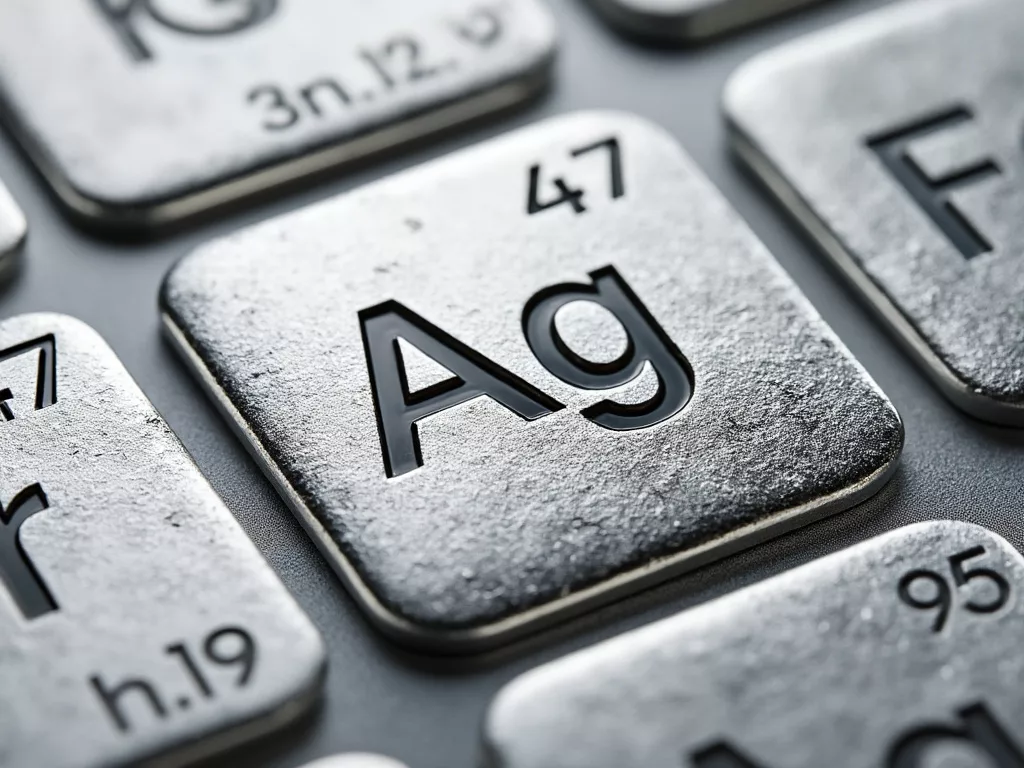Silver, often associated with luxury and purity, is not only a staple in jewelry but also plays an important role in various industries. Silver, known for its excellent electrical conductivity, plays a pivotal role in electronics. It’s electrical conductivity is even higher than copper. Let’s look into what makes silver a remarkable element.
Table of Contents
The Basics of Silver
- Name: Silver
- Symbol: Ag (from Latin ‘argentum’)
- Atomic Number: 47
- Atomic Mass: 107.8682 u
- Group: 11, Transition Metals
Where Does Silver Come From?
Silver is mostly found in nature as a free element or in its native form, but it often occurs in minerals like argentite (AgS) and in ores of copper, lead, and zinc, from which it is extracted as a byproduct. The largest deposits are found in Mexico, Peru, and China, with significant mining also occurring in the United States, Canada, and Australia.
Chemical Properties of Silver
Silver’s atomic structure includes 47 protons in its nucleus, surrounded by electrons in energy levels, with one electron in the outermost shell which gives it high reactivity. This electron configuration makes silver highly conductive for both electricity and heat. Silver does not oxidize in air, unlike many other metals, but it does tarnish when exposed to sulfur compounds, forming silver sulfide.
See also: Liquid Metal Gallium that Melts in Hand
Applications of Silver
- Electronics: Due to its superior conductivity, silver is used in circuits, switches, and contacts. It’s integral in the manufacturing of solar panels, touch screens, and LEDs.
- Photography: Although digital photography has reduced its use, silver halides were once the backbone of photographic films due to their sensitivity to light.
- Medicine: Silver has antimicrobial properties. Silver nitrate solutions have been used for centuries to prevent eye infections in newborns. Today, silver compounds are used in bandages, catheters, and wound dressings to prevent bacterial growth.
- Jewelry and Silverware: Beyond its industrial uses, silver’s lustre and workability make it ideal for crafting jewelry, coins, and tableware. Sterling silver, an alloy containing 92.5% silver, is commonly used for these purposes.
- Mirrors: Before the advent of aluminum, mirrors were backed with silver for its reflective properties.
Environmental and Health Impacts of Silver
While silver is not toxic in its metallic form, its compounds can be harmful. Silver nanoparticles, used in many antibacterial products, have raised concerns about their environmental impact, particularly their effect on aquatic life.
Economic Value of Silver
Silver is also an investment commodity. Its price can be quite volatile, influenced by industrial demand, mining supply, and investment trends. Unlike gold, silver has both industrial and investment demand, which can make its price dynamics interesting for investors.
Cultural Significance of Silver
Silver has been valued since antiquity. It’s been used in coinage, as a symbol of wealth, and even in cultural rituals. For instance, in many cultures, silver symbolizes purity and is often used in wedding rings and religious artifacts.
From the circuits in your phone to the antibiotics in your medicine cabinet, silver’s impact is both subtle and profound.
























